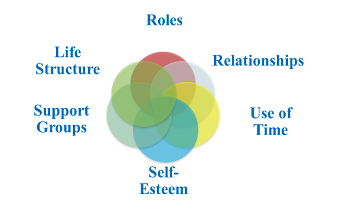
Marlene M Rosenkoetter
Augusta University, USA
Title: A psychosocial instrument to assess well elderly residing in privatized, residential retirement communities
Biography
Biography: Marlene M Rosenkoetter
Abstract
When older adults move to retirement communities there are major life transitions that occur. While these communities vary considerably in their focus, the types of housing available, and the services offered, they are primarily designed in the United States for the well elderly who are able to provide for their own basic needs. In Continuing Care Retirement Communities (CCRCs), there is the option of moving from independent living to assisted living and then to skilled care. Residents move their personal belongings, including furniture, to their new home. Services include housekeeping, meals, and care of the apartment and grounds. This transition involves numerous changes and can result in adjustment needs that may or may not be met sufficiently. They must leave their previous home where they have frequently lived for many years, their friends and family, and their community. Their roles change from being the primary provider to having services provided. Responsibilities change from home care to freedom. Their self-esteem can be impacted and support groups change to other older adults and staff in the retirement community. Their use of time and life structure now focuses on the activities of the retirement community and their new surroundings. There are significant changes in their Life Patterns: Roles, Relationships, Self-Esteem, Support Groups, Use of Time and Life Structure. These Life Patterns were used as the conceptual framework for the development of a psychosocial assessment tool to measure the impact of changes upon the transition and adjustment to
residential life in a retirement community. Results from 240 residents in three retirement communities in the south-eastern United States indicated that the instrument can be used effectively to assess the adjustment of these residents. A principal factor analysis with varimax rotation supported the use of the framework as the organizing referent of the instrument, the first published tool for this measurement.

Conceptual Framework - Life Patterns Model
Recent Publications:
- Rosenkoetter, M., McKethan, Looney, S. & T., Chernecky, C. (2016). Assessment of the Psychosocial Adjustment of Well Elderly Residing in Retirement Communities Issues in Mental Health Nursing, Sep 28:1-9 & 13(11),858-867.
- Ayalon, L. & Green, V. (2013). Social ties in the context of the continuing care retirement community. Qualitative Health Research, 23(3), 396-406.
- Earl, J., Gerrans, P., & Halim, V. (2015). Active and adjusted: Investigating the contribution of leisure, health and psychosocial factors to retirement adjustment. Leisure Sciences, 37(4), 354-373.
- Goodwin, J. (2014). Notions of fantasy and reality in the adjustment to retirement. Ageing & Society, 34(4), 569-589.
- Topa, G. (2015). Psychosocial factors in retirement intentions and adjustment: A multi-sample study. Career Development International, 20(4), 384-408.


